
How to Use lora: Examples, Pinouts, and Specs
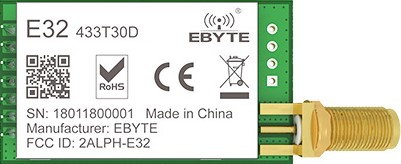
 Design with lora in Cirkit Designer
Design with lora in Cirkit DesignerIntroduction
LoRa (Long Range) is a patented digital wireless data communication technology developed by Semtech. It is a low-power wide-area network (LPWAN) protocol designed for long-range communication with low power consumption. LoRa enables long-range transmissions (up to several kilometers in rural areas) with low power usage, making it ideal for Internet of Things (IoT) applications, smart cities, agriculture, and devices in remote locations where power resources are limited.
Explore Projects Built with lora
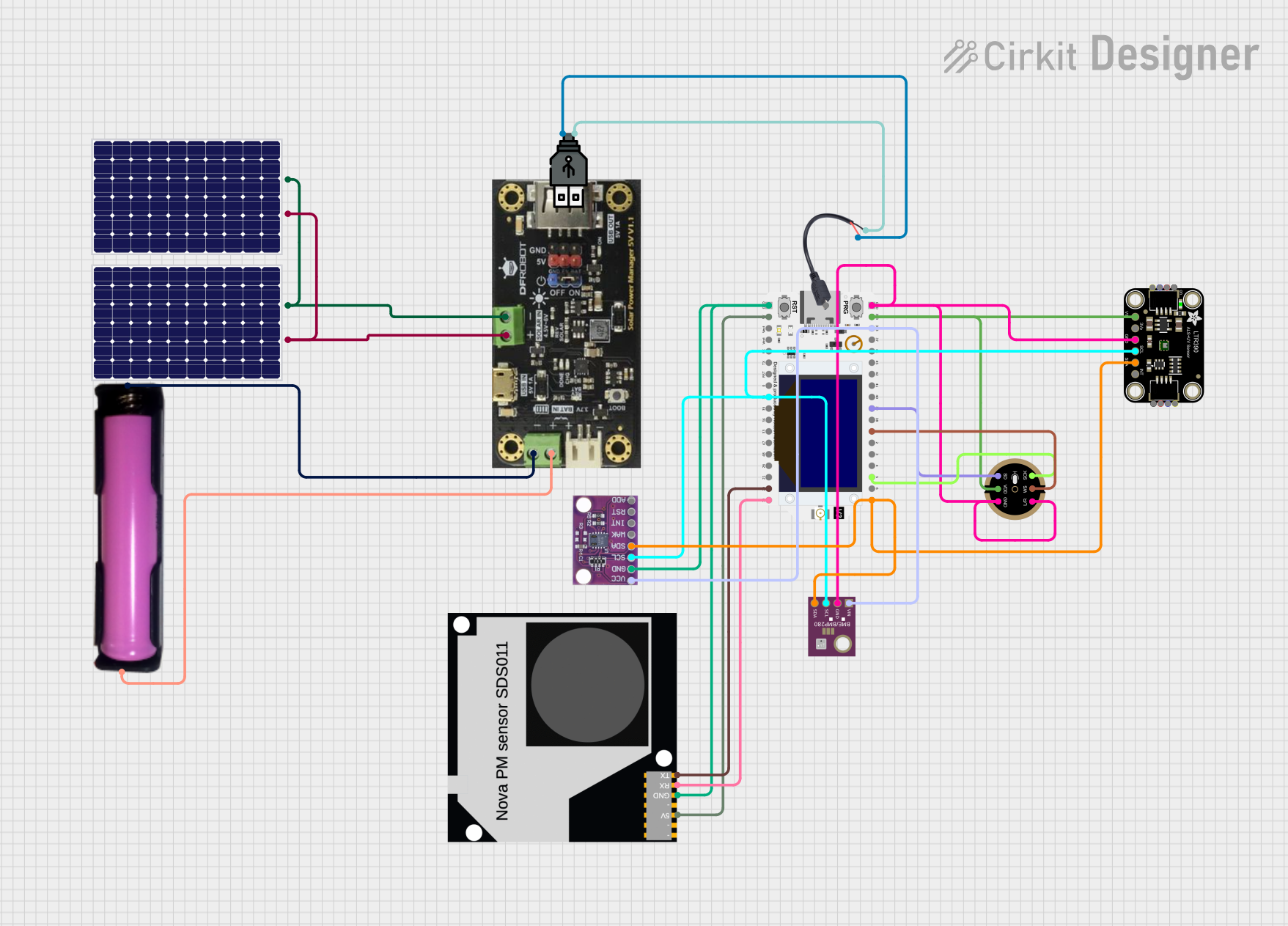
 Open Project in Cirkit Designer
Open Project in Cirkit Designer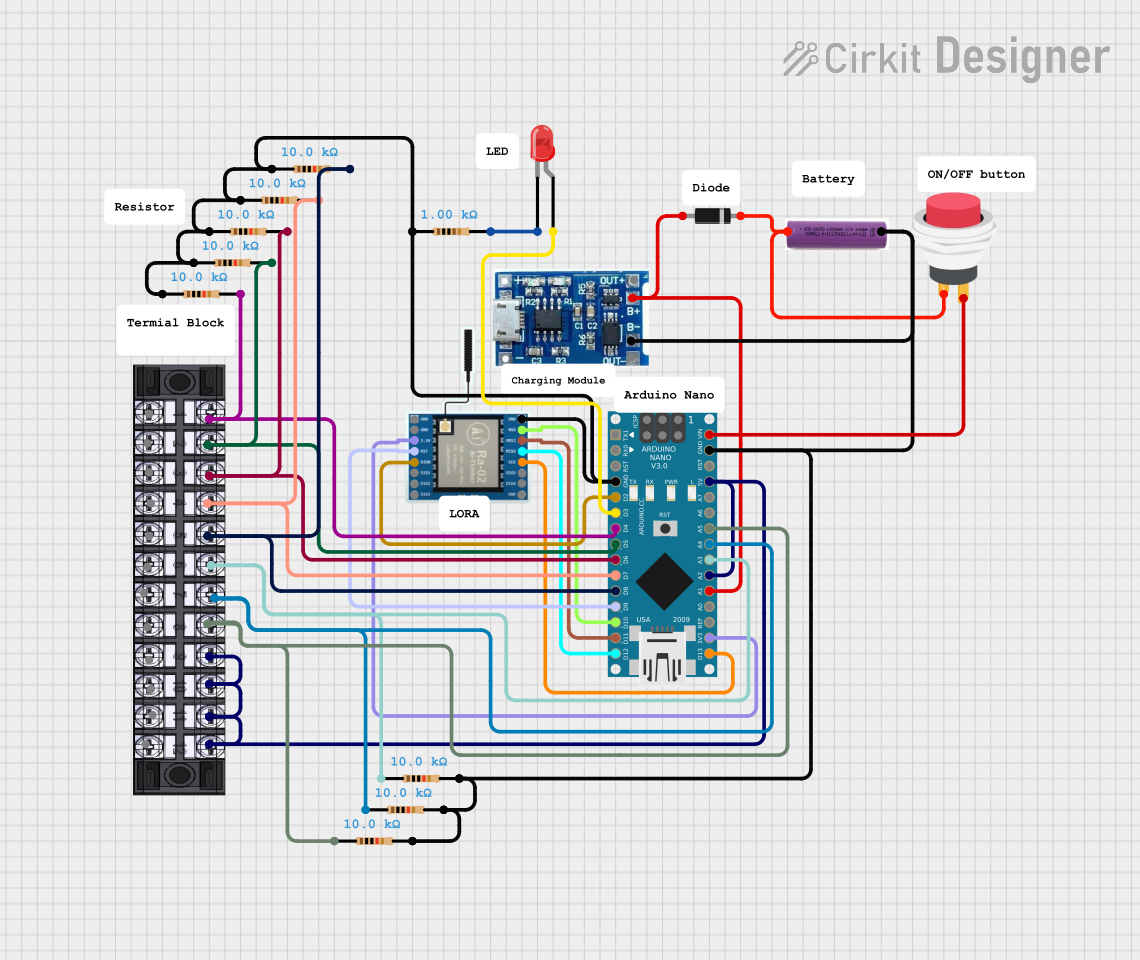
 Open Project in Cirkit Designer
Open Project in Cirkit Designer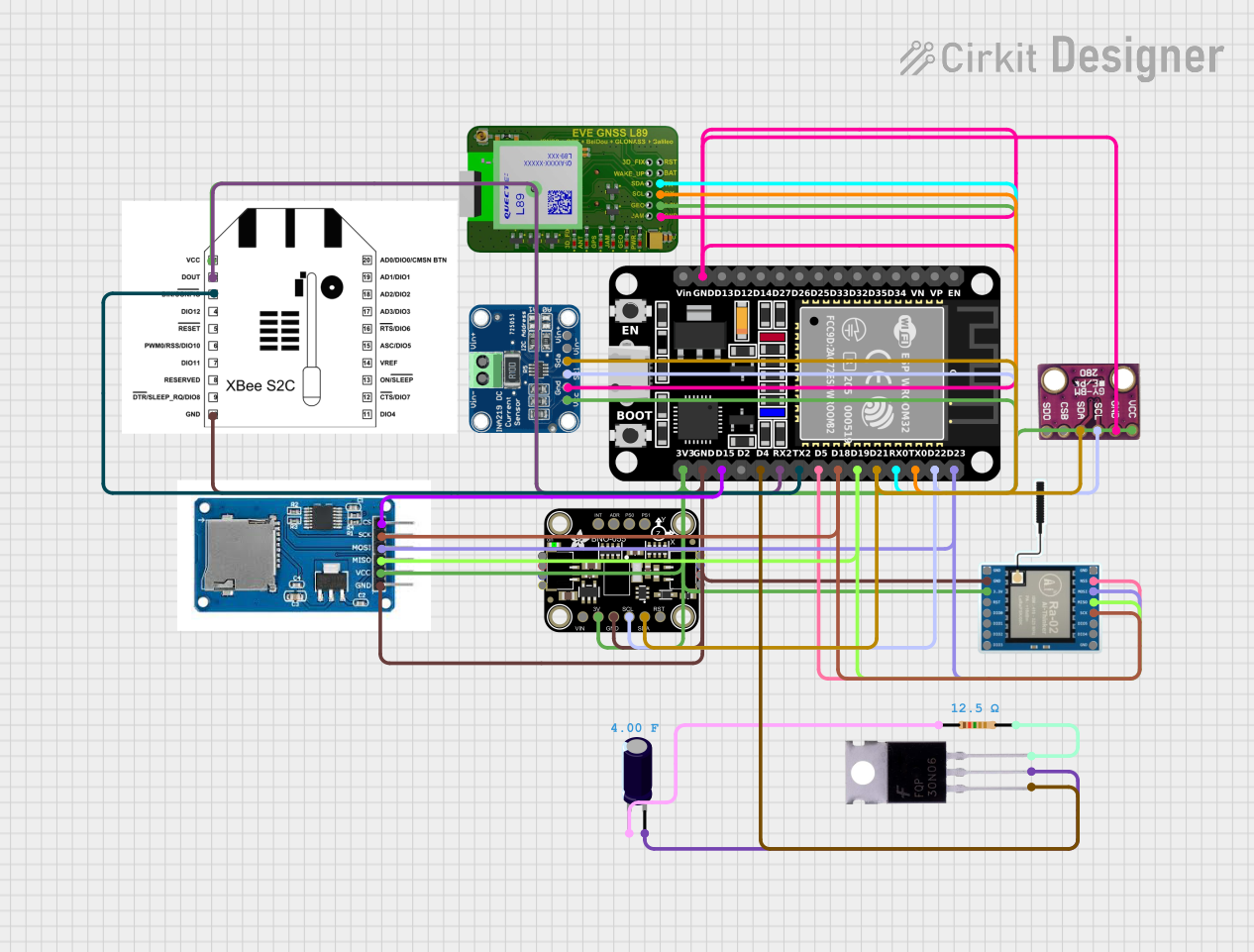
 Open Project in Cirkit Designer
Open Project in Cirkit Designer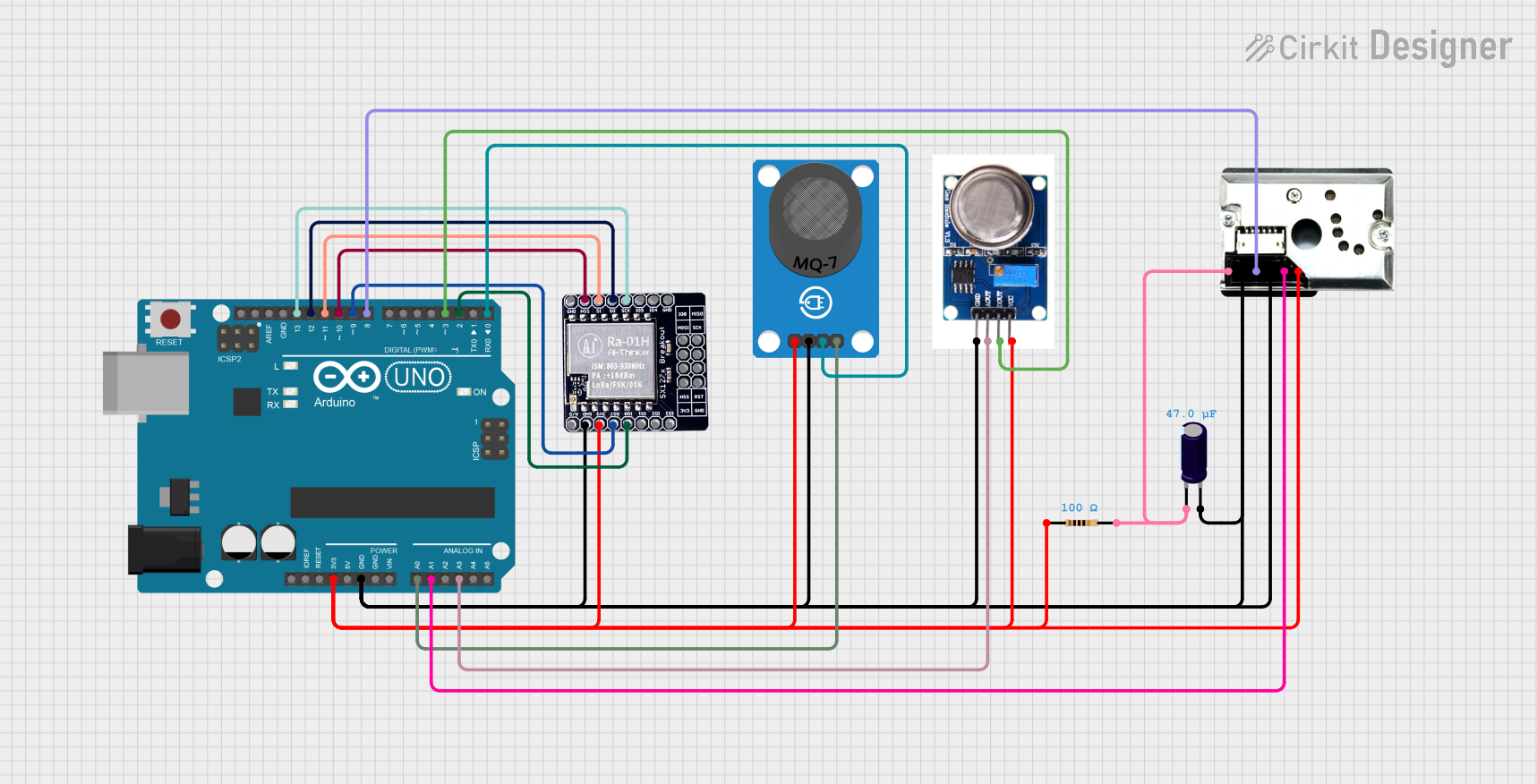
 Open Project in Cirkit Designer
Open Project in Cirkit DesignerExplore Projects Built with lora

 Open Project in Cirkit Designer
Open Project in Cirkit Designer
 Open Project in Cirkit Designer
Open Project in Cirkit Designer
 Open Project in Cirkit Designer
Open Project in Cirkit Designer
 Open Project in Cirkit Designer
Open Project in Cirkit DesignerCommon Applications and Use Cases
- IoT devices and sensors
- Smart agriculture and environmental monitoring
- Asset tracking and logistics
- Smart cities (street lighting, waste management)
- Remote area communication for weather stations and research
- Home and building automation
Technical Specifications
Key Technical Details
- Frequency Bands: 868 MHz (EU), 915 MHz (NA), others depending on region
- Modulation: LoRa proprietary modulation technique
- Range: Up to 15 km in rural areas, 2-5 km in urban areas
- Sensitivity: Down to -148 dBm
- Output Power: Up to +20 dBm
- Data Rate: 0.3 kbps to 27 kbps
- Power Consumption: Very low, suitable for battery-powered applications
Pin Configuration and Descriptions
| Pin Number | Name | Description |
|---|---|---|
| 1 | GND | Ground connection |
| 2 | VCC | Power supply (3.3V typical) |
| 3 | SCK | SPI Clock |
| 4 | MISO | Master In Slave Out - SPI bus |
| 5 | MOSI | Master Out Slave In - SPI bus |
| 6 | NSS | SPI Chip Select |
| 7 | RESET | Reset pin |
| 8 | DIO0 | Digital I/O (used for interrupt signaling) |
| 9 | DIO1 | Digital I/O (optional, for additional interrupt signaling) |
| 10 | ANT | Antenna connection |
Usage Instructions
How to Use the Component in a Circuit
- Power Supply: Connect the VCC pin to a 3.3V power source and the GND pin to the ground.
- SPI Interface: Connect SCK, MISO, MOSI, and NSS to the corresponding SPI pins on your microcontroller.
- Reset and Interrupts: Connect the RESET pin to a digital pin on your microcontroller for resetting the module. DIO0 and DIO1 can be connected to interrupt-capable pins for receiving event notifications.
- Antenna: Attach an appropriate antenna to the ANT pin for signal transmission and reception.
Important Considerations and Best Practices
- Ensure that the power supply is clean and stable to avoid communication errors.
- Use impedance-matched antennas for the specific frequency band of your LoRa module.
- Keep the antenna as far away from metal objects and electronic components as possible to prevent signal interference.
- Follow local regulations regarding frequency usage and transmission power.
Example Code for Arduino UNO
#include <SPI.h>
#include <LoRa.h>
// Define the LoRa module pins
#define SS 10 // NSS
#define RST 9 // RESET
#define DI0 2 // DIO0
void setup() {
Serial.begin(9600);
while (!Serial);
// Initialize LoRa module
LoRa.setPins(SS, RST, DI0);
if (!LoRa.begin(915E6)) { // Start LoRa using the frequency for your region
Serial.println("Starting LoRa failed!");
while (1);
}
}
void loop() {
// Send a message
LoRa.beginPacket();
LoRa.print("Hello, LoRa!");
LoRa.endPacket();
// Wait for a second before sending the next message
delay(1000);
}
Troubleshooting and FAQs
Common Issues
- No Communication: Ensure that the SPI connections are correct and the antenna is properly connected.
- Short Range: Check the antenna placement and orientation. Also, verify that you are using the correct frequency band.
- High Power Consumption: Make sure that the module is in sleep mode when not transmitting to save power.
Solutions and Tips for Troubleshooting
- Double-check wiring and solder joints for any loose connections or shorts.
- Use a logic analyzer or oscilloscope to verify SPI communication.
- Ensure that the module's firmware is up to date and correctly configured for your application.
FAQs
Q: Can I use LoRa for real-time applications? A: LoRa is designed for low data rate applications and may not be suitable for real-time communication due to its inherent latency.
Q: Is LoRa secure? A: LoRa includes built-in encryption using AES-128, but additional security measures should be implemented at the application layer.
Q: How many devices can communicate in a LoRa network? A: LoRa networks can support thousands of devices, but the exact number depends on the network architecture and application requirements.
Q: Can I use LoRa modules from different manufacturers together? A: Yes, as long as they comply with the LoRaWAN standard and are configured to operate on the same frequency and settings.